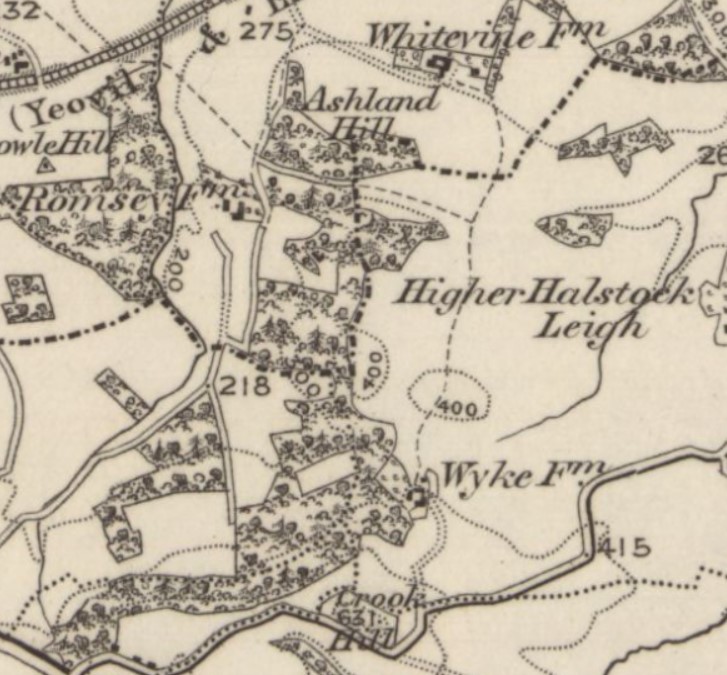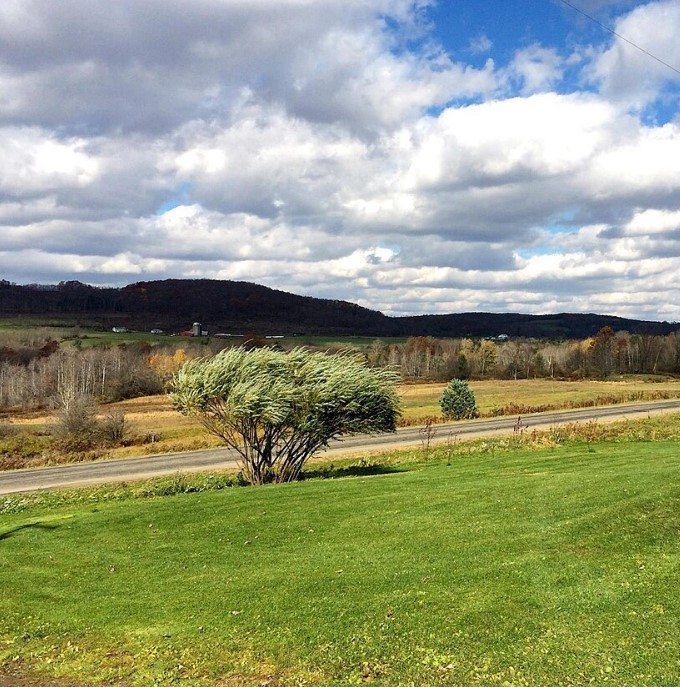Introduction
Samuel Esau Saunders’ life story was unusual in that he emigrated to the United States in his early 50s, returned to England in his early 60s, and then emigrated again at the age of 70.
His father was a tenant farmer who occupied a succession of farms in Somerset and Dorset. Following in his father’s footsteps, Samuel rented several farms before emigrating for the first time in 1889.
Birth
Samuel Esau Saunders was born on 13 November 1836 at Rampisham and was baptised at Batcombe on Christmas Day of the same year.
His father, William Saunders, worked as a butcher at Batcombe before relocating to Rampisham around 1835 to pursue a career as a dairyman. Samuel’s mother, Mary Ann, was the daughter of John Bird, a farmer at Batcombe.
Childhood
Samuel’s father, William, made significant progress in his farming career. In about 1840, he and his brother, Matthew, became farmers at Hillfield, possibly working in partnership as their households were next to each other in the 1841 census. In the mid-1840s, the brothers separated, with Matthew moving to Merriott and William relocating to Parsonage Farm, Pendomer, where he farmed 75 acres as recorded in the 1851 census. In about 1857, William moved to Wyke Farm, Halstock, farming 200 acres in April 1861 and 150 acres by April 1871.[1] He continued at the farm until his retirement in 1875.[2]
By the end of 1860, Samuel was the only son remaining at home, as his three older brothers had married. His three sisters, Mary Anne, Elizabeth Charlotte, and Sarah Jane, also lived at home. Tragically, Sarah Jane died in 1863 at the age of 13.
Marriage
In 1865, Samuel married Martha Gillingham, the eldest daughter of George Gillingham, a farmer who occupied nearly 200 acres at Pendomer.
Eleven years later, Samuel’s younger sister, Elizabeth Charlotte, married Martha’s younger brother, George.
Hardington
Samuel and Martha’s first child was born at Halstock in 1866. Shortly after, the family moved to Hardington, where Samuel occupied Romsey Farm. This farm was situated close to his father’s farm, which allowed for collaboration and resource sharing. During their time at Romsey Farm, they had another four children.
Being a farmer came with responsibilities, and in April 1869, Samuel was appointed as an overseer.[3]
October 1870 must have been a worrying time for Samuel because foot-and-mouth disease broke out on the farm, infecting one bull and seven heifers.[4]
Thorncombe
In about 1872, Samuel became the tenant of Synderford Farm, Thorncombe, where their last three children were born, including a son who died in infancy.
Tragedy struck the family in 1873 when his father-in-law, George Gillingham, committed suicide. Although George left an estate valued at “under £2,000,” to his nine children per stirpes, they could not inherit until their mother died in 1883.[5]
Samuel spent about six years at Thorncombe, holding his farm sale on 4 November 1878.[6]
Netherbury
By April 1881, Samuel had taken on Ford Farm, Netherbury, occupying 105 acres and employing three men. His time there was brief, as, in April 1883, a local solicitor advertised it for rent with immediate possession.[7]
Samuel’s departure from the farm may be connected with his father’s death in February 1883. If he was expecting an inheritance, he was disappointed because his father died intestate and with too small an estate to warrant letters of administration.
Emigration to America
The next six years of Samuel’s life are undocumented, but he emigrated to America with his family in 1889.
His wife, Martha, passed away on 26 December 1896 at Belmont, Allegany County, New York, at the age of 61.
Return to England
In an unexpected turn of events, Samuel returned to England, where by April 1901, he was a visitor at Oaklands Farm, East Chelborough, staying with Mary Jane Caines, his late wife’s cousin, who had become a widow the previous year. The motivations behind his return are unclear, but his visit was more than a short-term one. Was he finding it difficult to cope in America without his wife, or did he entertain thoughts of marrying Mary Jane? If it was the latter, his plans came to nothing as Mary Jane quit the farm the following year, holding her farm sale on 23 September 1902, and moving to Curry Rivel, where she worked as a housekeeper for her nephew and niece.[8]
Samuel reconnected with his surviving siblings, particularly Mary Anne, who was a widow living at Sydling St Nicholas. He may have gone to live with her, as in her will, dated 1903, she appointed him as one of her executors. When he proved her will in 1906, his address was listed as Sydling St Nicholas.[9] She bequeathed him her household items, a legacy of £100 and a quarter share of the residue of her estate. As her estate was valued at £738 8s 6d, Samuel probably inherited about £280.[10]
Return to America
Mary Anne may have intended her extra legacy of £100 to encourage Samuel’s return to America to be with his children. After settling Mary Anne’s affairs, he returned to America, where he lived for another twenty years, eventually passing away in Alfred, Allegany, New York, on 10 November 1926, at the age of 89.
Children
Samuel and Martha had seven children: one born at Halstock, four at Romsey Farm, Hardington, and three at Synderford Farm, Thorncombe, one of whom died in infancy. All their children emigrated to America, although it is possible their son, John Samuel, returned to England, as a person by that name of appropriate age passed away in Dorset in 1941.
References
[1] Sherborne Mercury 22 September 1857 p. 4.
[2] Dorset County Chronicle, 4 November 1875, p.20.
[3] Western Gazette, 9 April 1869, p.8.
[4] Langport and Somerton Herald, 22 October 1870, p.5.
[5] The will of George Gillingham, dated 7 November 1857, proved at Taunton on 21 July 1873. By the time of his death, two of George’s children (Mary Jane and Ellen Grace) had died, leaving issue.
[6] Pulman’s Weekly News and Advertiser, 29 October 1878, p.4.
[7] Bridport News, 20 April 1883, p.2.
[8] Western Gazette, 29 August 1902, p.2.
[9] However, Samuel’s brother, Matthew Bird Saunders, also lived at Sydling St Nicholas.
[10] The will of Mary Anne Harris, dated 20 November 1903, proved in London on 16 March 1906. If we allow £30 for the furniture and £8 6s 8d for expenses, Samuel inherited £30 plus £100 plus (£600/4). Matthew and Elizabeth each received one-quarter of the residue, as did the children of Mary Anne’s late brother, William Jacob, on reaching the age of 21.


